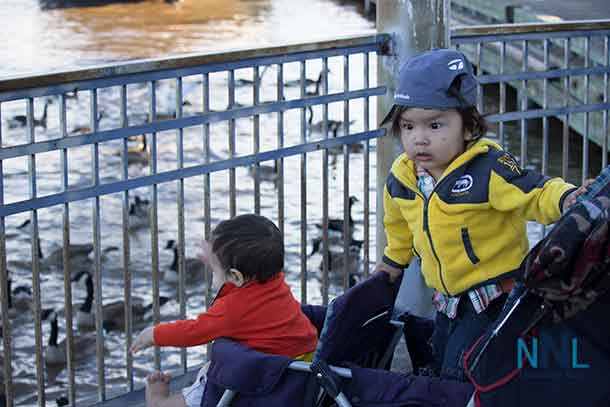

THUNDER BAY – The Great Canadian Shoreline Cleanup is challenging Canadians to mark Canada’s big birthday by cleaning their shorelines in record-breaking numbers. Along the riverbanks in Thunder Bay sadly, far too often there is far too much litter left. People seem unwilling far too often to pick up their litter, there are similar issues at local swimming holes, and sadly even at parks and along creek walkways and streams.
Litter along the waterways enters Lake Superior, and our source of drinking water in Thunder Bay.
Registration for the Great Canadian Shoreline Cleanup is now open and is easier than ever, with a new, user-friendly website at ShorelineCleanup.ca.
“We had an incredible year in 2016,” said Rachel Schoeler, manager of the Shoreline Cleanup. “We broke all of our previous records, with more than 2,300 shorelines cleaned and 77,000 people helping us protect ecosystems and wildlife across the country.”
The Shoreline Cleanup isn’t coasting on its success for the year ahead; instead it will build on the momentum to almost double participation, with a birthday-themed target of 150,000 Canadians taking part for 2017.
“We’re setting an ambitious target because we believe Canadians have a responsibility to protect the nature around them — and as last year’s record participation shows, Canadians care deeply about the health of their communities and want to take action for the environment.”
Now in its 24th year, the Great Canadian Shoreline Cleanup, presented by Loblaw Companies Limited, is Canada’s largest conservation-based cleanup. An initiative of the Vancouver Aquarium Marine Science Centre and WWF-Canada, it calls on Canadians from coast to coast to help rehabilitate shoreline areas throughout the year. Participating in the Shoreline Cleanup educates participants on the stewardship of the water, habitats and how to make a positive impact on the environment.
“From storm drains, parks and school yards to lakes, rivers and oceans, shoreline litter impacts people and wildlife such as frogs, turtles, whales and birds in every corner of the country. By participating in the Shoreline Cleanup, we’re picking up debris before it has the chance to get into our aquatic ecosystems,” said Schoeler.
The most widely collected litter items in 2016 included plastic and paper bags, cigarettes, food wrappers and containers, caps and lids, glass and plastic beverage bottles, beverage cans, disposable flatware, straws, tobacco packaging and building materials. Once these items enter aquatic ecosystems, they can contaminate and degrade habitat, and cause injury to wildlife from ingestion and entanglement.
Celebrate Canada and make a difference in your community by taking action against shoreline litter. Participants can start a cleanup any time of year, at any shoreline across the country, and are invited clean it multiple times throughout the year.
The Great Canadian Shoreline Cleanup
The Great Canadian Shoreline Cleanup, presented by Loblaw Companies Limited, is one of the largest direct action conservation programs in Canada. A conservation initiative of the Vancouver Aquarium Marine Science Centre and WWF-Canada, the Shoreline Cleanup aims to promote understanding of shoreline litter issues by engaging Canadians to rehabilitate shoreline areas through cleanups. www.ShorelineCleanup.ca
